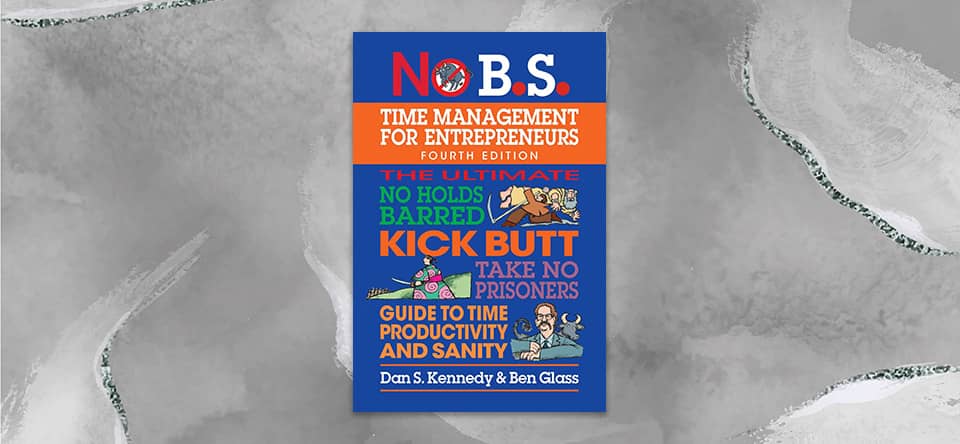Issue 014: How to Get Customers When People Don't Trust You, 10 Time Management Techniques Really Worth Using, and More.

Hi friend and happy Wednesday!
Welcome to Startup Blitz, a weekly newsletter full of timeless ideas and insights you can use in your online business.
📈 How to increase repeat sales the right way
🎓 How to get customers when you are new and people don’t trust you
👨💻 How to be an effective CEO
🕒 10 time management techniques really worth using
Not subscribed? Learn more and sign up.
How to Do Customer Retention and Increase Repeat Sales the Right Way 📈

For brands making up to $1M annual revenue: Right now, you’re setting business foundations so you have to be bold in the first year.
For brands with $1M to $10M revenue: Put on your analytics goggles and start measuring. When does loyalty happen? What offers appeal to the nurture versus the loyalty stage?
For brands with $10M to $20M revenue: This is where smart segmentation happens. You have to lose the “dollar for dollar” mindset and align money and time with customers’ predicted lifetime value (LTV).
🎓 Scientific Research: State Your Anticipated Growth to Boost Signups

This approach works particularly well for communities, marketplaces, and any product where a larger user base creates more value. However, it can also reduce hesitancy for other types of businesses.
👨💻 How Ayman Al-Abdullah Grew AppSumo to $84M Revenue

1. The CEO Should Be the Laziest Person in the Company
2. Aim for True Product-Market Fit
3. Early Growth Hinges on Generating Leads
4. Hiring is a Sign of Failure
5. Hire to Scale, Not Discover Revenue
“Most CEOs waste precious resources on unproven ideas. Your job as the founder is to dig for the gold veins… and then hire someone else to extract it.”
6. Surround Yourself with A-Players
“If you’re surrounded by B players, it’s probably because you’re a B leader. Your vision needs to be so large (and compelling) that an A player’s vision can fit underneath your umbrella.”
7. Build a Personal Brand to Break $10M
8. Seek Mentors for 8-Figure Growth
📖 Book of the Week: No B.S. Time Management for Entrepreneurs

Technique #1: Tame ALL the Interruptions
“You’ve got to free yourself from the tyranny of the phone, text messages, tweets, emails, and similar stuff. If you refuse to limit and control access to you, the war is lost even if you win a few battles here or there.”
Technique #2: Minimize Meetings
“Find every way possible to minimize your time spent in formal meetings. Every discussion or meeting, wherever or however held, should have a purpose and an objective, a measurement of its success or failure, and a sacrosanct time limit.”
Technique #3: Practice Absolute Punctuality
“Being punctual gives you the right to expect and demand that others treat your time with utmost respect. You cannot reasonably hope to have others treat your time with respect if you show little or no respect for theirs.”
Technique #4: Make and Use Lists
“There is not a single time management discipline or system on Earth that doesn’t revolve around making and using lists. You CANNOT carry it all in your head.”
Have at least two lists – one for your schedule, one for your things to do.
Technique #5: Fight to Link EVERYTHING to Your Goals
“The only real reason more people aren’t much, much more productive is that they don’t have enough reasons to be. A secret to greater personal productivity is more good reasons to be more productive. That’s why you have to fight to link everything you do (and choose not to do) to your meaningful goals.”
Technique #6: Tickle the Memory with Tickler Files
“Let’s assume you agree to follow up with a client on a particular matter on the 10th of next month. Take either that client’s whole file or just that piece of correspondence or just a handwritten note and plop it into the blue file folder numbered 10. And forget it. On the 10th of next month, it’ll pop up all by itself and remind you to do it.”
Technique #7: Block Your Time
“If you lay your calendar out before you and pre-assign or block as much of your time as possible, as much in advance as possible, you will then leave yourself only a small amount of loose, unassigned time. Further, by blocking time for important, high-value functions you perform, you prevent demands of others from moving your highest and best-value activities from number one to number ten on your list, over and over again.”
Technique #8: Minimize Unplanned Activity
“By reducing unscheduled time and unplanned activity, you automatically reduce waste. Ideally, you should schedule your day by the half hour, from beginning to end. I now use the term “script” in place of “schedule.” Many days, every minute is accounted for in advance and outcomes are preordained.”
Technique #9: Profit from “Odd-Lot” Time
“Everything is now portable. A seminar by a great speaker, just about any and every book ever published, how-to information of every variety, accessible through online media, on YouTube, via podcasts. You can use YouTube for something other than watching kittens waterski. There is no excuse to simply waste time while waiting in an airport, stuck in traffic, parked in a reception room.”
Technique #10: Live Off Peak
“Why make life more difficult than it already is? For example, avoid going to the bank on Fridays, especially after 11 a.m., and especially if it is the 1st or 15th of the month. Avoid going to the supermarket the day before a holiday weekend. Avoid going to the post office the day before a rate increase.”
Thanks for reading, until next week!
You are receiving this email because you subscribed to Startup Newsletter. You can Unsubscribe from here.